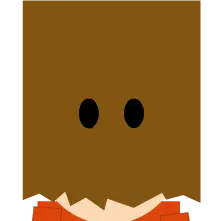My partner and I want to make a plant stand, one of those things kind of like a stepladder with two or three shelves for plants. We have decided the measurements. We’ve bought a pine board (18mm thick) that has a brushed finish. The shop cut it into 41cm lengths, but now we need to take the final centimetre off and cut down about 5-10cm off the other side to bring it down to our desired size of 40cm x 40cm.
How do we do that? How do you cut down to a straight line? The tools (that I think are most relevant anyway, we have a pretty decent home maintenance toolkit of spanners and screwdrivers etc.) we have are:
-large rip saw,
-basic router,
-2 or 3 chisels,
-small hack saw.
Should I cut as close as as possible with the rip saw and then use a straight bit in the router? I am not sure that the guide on the router will be long enough to reach across ~40cm of board to brace against the far edge. If I’m barking up the wrong tree and need to get some other tool, please do let me know. We’re on a tight budget but if it’s a tool that we will use repeatedly, we can probably afford a budget version of it.
Thank you in advance :)
If you insist on that set of tools:
- Scribe the line you want to cut with a sharp knife (or chisel)
- Use a sharp chisel to make a 5-10mm shallow v cut on the waste side to the base of the knife marking. (See: https://www.youtube.com/watch?v=9iQ1-kuQ1qY)
- Saw on the waste side of the line with the rip saw. Go slow and don’t try to muscle it. Long strokes. Focus on keeping to the line.
Thanks for the video. I know the set of tools is sub-optimal, so I appreciate you offering a way to make it work.
We’re going to buy a drill in the near future. Do you think that is a useful priority? I think an orbital sander would be useful too. We don’t have a workshop space, so we can’t get tabletop tools, if that makes sense.
Drills and sanders are useful for almost any woodworking project (and many non-woodworking projects), and they don’t take up a ton of space, so you get a lot of bang for your buck there.
You can sand by hand, of course. But pretty much everyone hates sanding. Spend an hour doing it and ask yourself if the $20 for a used sander is worth it.
Drills are basic necessities in the home toolkit.
(Edit: typo)
For a hand saw, you could try the advice in this video from Wood by Wright, but may I suggest a cheap circular saw and a cutting guide track like this Swanson that I used for a while before I upgraded to a Grizzly track saw.
Great video, thanks, I have to say that saw myself in the video when he was twisting from one side to the other. Good to know what to avoid.
I’ll look up videos about how you use a guide track, that’d be great. I’ll have to make sure I can justify a purchase like that by using it enough. Thanks for the pointers!
I’m in the same boat. I have (cordless) jigsaw and hand planer for rough dimensioning. Then I use all (human powered) hand tools - Japanese pull saw Ryobi (both rip and crosscut), Dozuki (for finer work).
Block plane for smoothing. A marking knife and a square should get you on your way.
For drilling, I just use a brace or an eggbeater style hand drill.
Thanks a lot for the pointers!


